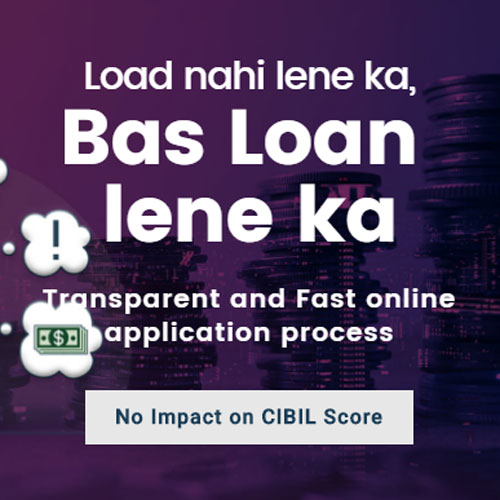Kisan Vikas Patra is a small savings instrument that will facilitate people to invest in a long-term savings plan. This scheme was originally introduced by the Government of India in 1988 and was again reintroduced in 2014 with some changes. Even though this scheme was popular, a Government Committee formed in 2011 suggested that KVP could be misused for purposes like money laundering. In 2014, Kisan Vikas Patra was relaunched with a number of changes including mandatory PAN Card proof for investments over Rs.50,000 and income source proof for investments exceeding Rs.10 lakh.
With an effective interest rate of 8.7%, Kisan Vikas Patra is was becoming a popular investment instrument given that it is of low-risk and also guarantees assured returns. However, the interest rates have been slashed to 7.8% in the 2016 Union Budget which will have its effect in FY 2016-17.
Below is the timetable for change in interest rates for all Post Office Savings Schemes.
| S.No | Quater for which rate of interest would be effective | When it will be noticed | Rate of interest to be based on FIMMDA month end G-sec. rate pertaining to |
| 1 | April -June | 15th March | Dec-Jan-Feb |
| 2 | July – September | 15th June | Mar-Apr-May |
| 3 | October – December | 15th September | Jun-Jul-Aug |
| 4 | January – March | 15th December | Sep-Oct-Nov |
Now as per the schedule, Government announced the interest rate applicable to all Post Office Savings Schemes from 1st April 2017 to 30th June 2017.
| Instruments | Interest Rate 2015-16 | Interest Rate (Q1 & Q2) 2016-17 | Interest Rate (Q3 & Q4) 2016-17 | Interest Rate (Q1 of 2017-18) |
| Kisan Vikas Patra (KVP) | 8.7 | 7.8* | 7.7** | 7.6*** |
Kisan Vikas Patra online
If you are planning to invest in Kisan Vikas Patra savings scheme, you can do so by visiting the nearest Post Office. Currently, you can not apply for Kisan Vikas Patra online.
Kisan Vikas Patra eligibility
The following are the eligibility criteria for Kisan Vikas Patra.
- The applicant must be an adult and a resident Indian.
- The applicant can apply for Kisan Vikas Patra on his own name or on behalf of a minor.
- Trusts are eligible to invest in Kisan Vikas Patra. HUFs (Hindu Undivided Family) and NRIs are not eligible to invest in KVP.
Kisan Vikas Patra Types
A Kisan Vikas Patra comes in the following types.
-
Single Holder Type Certificate
This KVP type is issued to an adult for himself or to a minor or on behalf of a minor.
-
Joint A Type Certificate
This is issued to two adults jointly and is payable to both the owners or to the survivor.
-
Joint B Type Certificate
This Type B Kisan Vikas Patra is issued jointly to two adults and is payable to either of KVP holders jointly or to the survivor.
Kisan Vikas Patra Interest rate
The interest rate for the old KVP scheme that was originally introduced in 1988 was between 8.2% to 8.4%. The 2014 Kisan Vikas Patra Scheme has an interest rate of 8.7% and the money doubles in 100 months, that is 8 years and 4 months. But the current rate has been changed from 8.7% to 7.8% which is a drop by 1.1%.
Kisan Vikas Patra maturity period
The maturity period for Kisan Vikas Patra that was introduced in 2014 is 8 years and 4 months. On maturity, the amount invested gets doubled. If you invest an amount of Rs.10,000, after a period of 8 years and 4 months, the amount will increase to Rs.20,000. The effective interest rate of Kisan Vikas Patra comes to around 8.7% although the current rate has been drastically slashed to 7.8%.
Kisan Vikas Patra Form
In order to purchase a Kisan Vikas Patra certificate, one must fill in the application form and furnish the required information. The required information must be provided in the identity slip also. In the application form, you will be required to mention the following details.
- The amount for which KVP certificate is to be purchased.
- The method of payment which can be either cash or cheque
- Type of KVP certificate, whether it is single or joint “A” or joint “B”
- The name of combined owners if KVP type is not single
- In case of a minor, the date of birth of the minor and his guardian who can encash KVP amount.
- Name of all nominees with full address and date of birth
Kisan Vikas Patra Benefits
The following are some of the benefits of investing in a Kisan Vikas Patra Scheme.
- A KVP certificate is offered in multiple denominations that give flexibility to the customers. The denominations vary from Rs.100 to a maximum of Rs.50,000.
- It is a scheme offered by the Government of India and hence the investor can be sure of returns on invested amount. Under KVP, the holder will get double the principal in a short period of eight years and four months.
- People who are looking for risk-free investment option will benefit from KVP scheme. Also, it is unaffected by inflation as the interest rate remains the same.
- There is no cap on the amount that one can invest in KVP. Depending on the purchasing power, a person can buy any amount.
- Kisan Vikas Patra certificate can be presented as collateral against loans. Investors can use the same to obtain a loan from banks.
- Applicants also have the option to withdraw the amount prematurely in KVP. The lock-in period is two years and six months.
- Kisan Vikas Patra is transferable from one person to the other. To pass on the benefits to the new holder, the owner must fulfill all required formalities. Before transferring it to a new holder, it is important to receive an approval at the post office.
- A KVP holder can enjoy tax benefits. The income from KVP is taxable but there is no tax deduction on entire money received at maturity, there is no tax deduction at source.
KVP Rules and Guidelines
After relaunching KVP in 2014, the Government of India also has specified a set of rules and guidelines for the same. As a KVP investor, you must be familiar with the rules and they are given below for your reference.
- Title and commencement – All rules with regard to KVP scheme will be called the “Kisan Vikas Patra Rules, 2014” and will be effective the day they are published in the Official Gazette.
- The definition of certain words in the rules, unless the context otherwise requires, will mean the following:
Act – Government Savings Certificate Act, 1959
Cash – Indian Cash currency
Certificate – Kisan Vikas Patra
Form – Form annexed to these rules
Post Office – Any departmental post office in India doing Savings bank work
Identity Slip – an identity slip issued to the holder of a certificate
Bank – Any branch of the State Bank of India, all its associate banks and designated branches of commercial and nationalized banks that are authorized for the Public Provident Fund Scheme.
- Denomination of Certificates – Kisan Vikas Patra scheme certificates will be issued in denominations of Rs. 1,000, Rs. 5,000, Rs. 10,000 and Rs. 50,000 only.
- Application of Post Office Savings Certificate Rules, 1960 – The process of applying for the Kisan Vikas Patra remains unchanged and is same application process as that of the Post Office Savings Certificate Rules, 1960.
- Purchase of the Certificate – Any number of KVP certificates of the specified denominations can be purchased.
- Type of Certificates – The certificate for Kisan Vikas Patra can be issued as one of the following types:
Single Holder Certificate – This certificate is issued to an adult for himself or on behalf of a minor or to a minor.
Joint ‘A’ Type Certificate – This type of certificate is issued jointly to two adults and is payable to both the holders jointly or to the survivor.
Joint ‘B’ Type Certificate – This type of certificate is issued jointly to two adults but payable to either of the two holders or the survivor.
- Issue of Certificate – The KVP certificate is issued as soon as the payment is made. The date of the certificate is the same as the date of the payment. If for any reason, the Kisan Vikas Patra Certificate cannot be issued immediately, a provisional receipt is issued which can be later exchanged for a certificate.
- Procedure of Purchase of Certificate – The applicant needs to be present and submit an application form, to buy a Kisan Vikas Patra certificate. The payment for this certificate can be made by cash, a demand draft drawn in favor of the Postmaster or a signed withdrawal form or cheque.
- Transfer of Kisan Vikas Patra Certificate from one person to another person – A Kisan Vikas Patra can be transferred from one person to another person by writing to the postmaster requesting for the same. Following are the cases in which the transfer can be sanctioned (i) from the name of the deceased to their legal heir (ii) from a single holder to the names of the joint holder (iii) from a holder to the court of law or another person under the orders of a court of law.
- Pledging of Kisan Vikas Patra Certificate – On an application made in Form B by the transferor and transferee, the Postmaster may allow the transfer of any certificate as security at any time to (i) the President of India or Governor of State (ii) The RBI or a Scheduled Bank or a Cooperative Society including a Cooperative Bank (iii) a Government agency or a Corporation (iv) a Housing Finance Company approved by the National Housing Bank and notified by the Central Government of India (v) a local authority; provided that the transfer of the certificate on behalf of a minor shall not be permitted under this rule.
- Nomination – The purchaser of the certificate, single or joint holder can nominate any person who in the event of the death of the certificate holder shall be entitled to hold the certificate. The payment of the amount will be made to the nominee at the maturity of the scheme.
- Post Maturity Interest – When the repayment of the amount is, inclusive of interest is due and has not been made, the interest on the amount due shall be allowed under the following conditions:
- It will be simple interest and calculated at the rate applicable from time to time to Post Office Savings Account.
- Any part of the period, for the purpose of payment of interest, that is less than one month shall be ignored.
- The depositor can receive the interest in a lump sum at the time of repayment of the due amount.
- Replacement of destroyed or Lost Certificate – If a Kisan Vikas Patra certificate is lost, damaged or destroyed, the person can apply for a duplicate of the same to the post office or the bank where the certificate was issued. If the application has been made to a post office or bank where it was not issued, the application will be forwarded to the right location. The application should have the certificate number, amount and date and the circumstances of destruction, defacement or loss. A duplicate certificate issued can be treated as an original certificate for all purposes except that it won’t be encashable without prior verification.
- Place of encashment of Kisan Vikas Patra – The certificate can be encashed at the post office or the bank where it was issued. It can also be encashed at another post office or bank provided the issuing authority is satisfied with the verification from the location of the issue and the person holding the certificate that needs to be encashed.
- Encashment of Kisan Vikas Patra on Maturity – For any denomination of certificate issued, the period of maturity will be eight years and four months commencing from the date of issue of the certificate. The amount inclusive of interest which is payable while encashing a certificate after the expiry of the maturity period will be double of that of the deposited amount.
- Premature Encashment of Kisan Vikas Patra Certificate – The certificate can also be encashed before the completion of the maturity under certain circumstances such as the death of the holder or any of the holders in case of a joint holder when ordered by a court of law or on forfeiture by pledge being a Gazetted Government Officer. The minimum lock-in period for this scheme is two and half years and can be prematurely encashed any time after this period. The simple interest is calculated on the rate from time to time under the scheme.
- Discharge of Certificate – On the encashment of the certificate, the holder will sign at the back of the certificate as a sign of having received the payment.
- Rectification of mistakes – Any clerical and arithmetical mistakes with regard to the certificate can be rectified by the Postmaster General provided it does not cause any financial loss to the Government.
- Power to relax – If a holder is facing an undue hardship, the rules may be made flexible for them on humanitarian grounds, that is not inconsistent with the Act if recorded in writing and approved by the Central Government.





